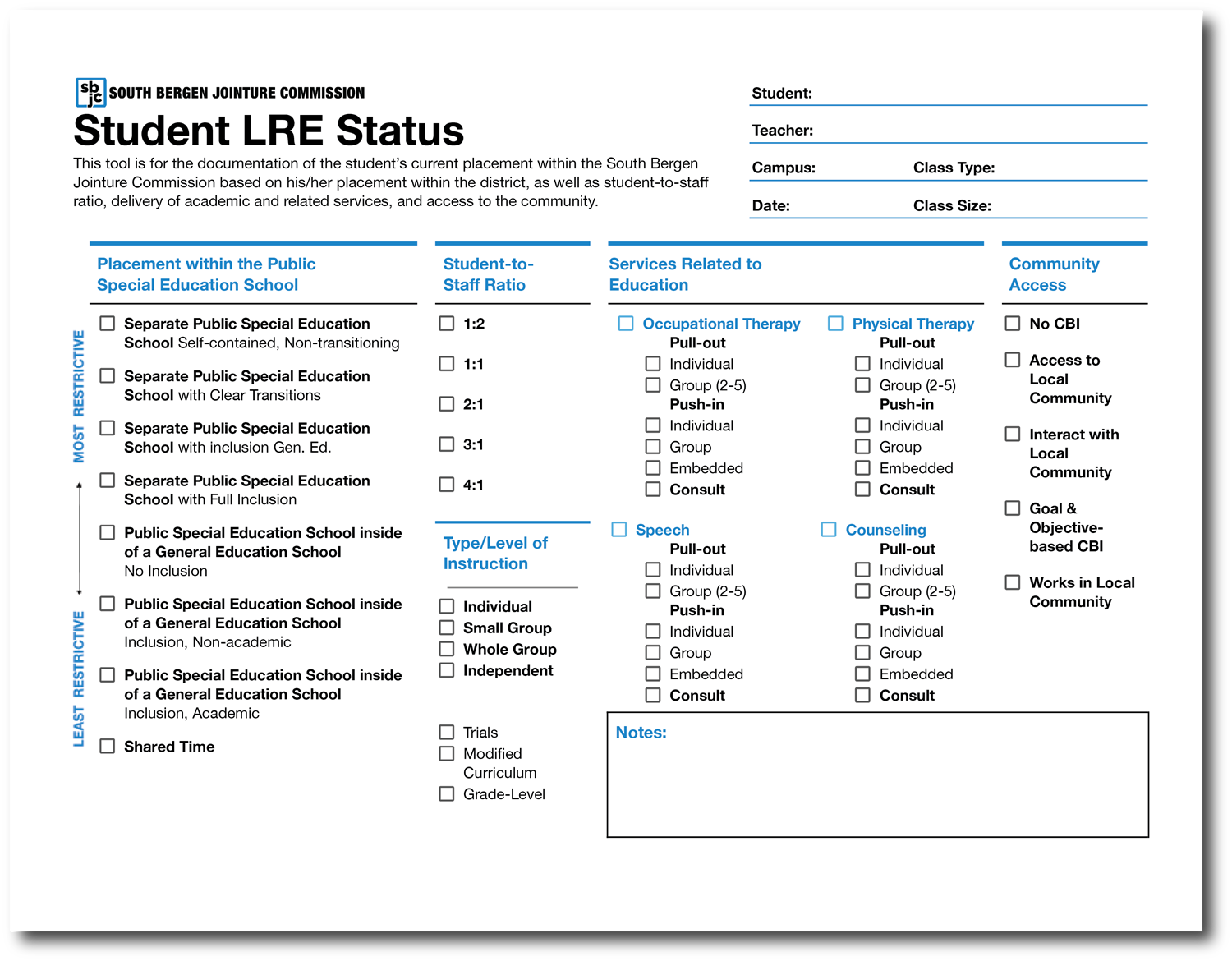- South Bergen Jointure Commission
- The LRE Tool
The LRE Continuum Tool
-
The vision of the SBJC is centered on providing our students with the tools needed to live successful and independent post-scholastic lives, and the first step in measuring that this is occurring is by developing a system that ensures that students are being educated in their least restrictive environment. The Student LRE Status Tool was developed by members of our Strategic Planning Committee to document the current placement of our students—it gives a snapshot of where each student is through the criteria listed below.
The SBJC has implemented this tool to be used at all Individualized Education Program (IEP) meetings.

PLACEMENT WITHIN THE PUBLIC SPECIAL EDUCATION SCHOOL
The SBJC offers a multitude of placements within our district, ranging from our self-contained school buildings, to our annex classrooms, to shared-time placement in students’ home districts. This specific criterion identifies a student’s current placement in terms of physical location within our district.STUDENT-TO-STAFF RATIO
This criterion identifies the amount of staff support needed for students to have the maximum level of success within the classroom.TYPE/LEVEL OF INSTRUCTION
This criterion identifies the capacity in which the student best learns (individual instruction versus small group versus whole group versus independent). It also identifies whether the student is working on a modified or grade-level curriculum.SERVICES RELATED TO EDUCATION
Determines which related services the student receives and at what level of instruction. Levels of instruction include:
Pull-out: Student receives services outside of the classroom.
Individual: Student receives services with no peers.
Group (2-5): Student receives services with 2-5 peers present.COMMUNITY ACCESS
We define community access as the literal physical access to environments external to the school and home. Community access is an important part of the life of our students, as it provides access to recreation tasks, social opportunities and enables them to develop skills and competencies. This criterion determines at what level the student is accessing the local community.

